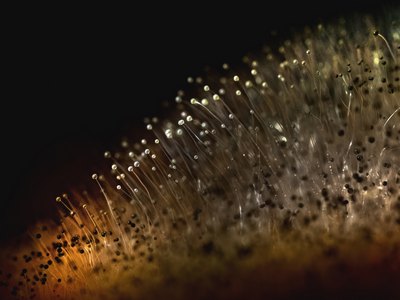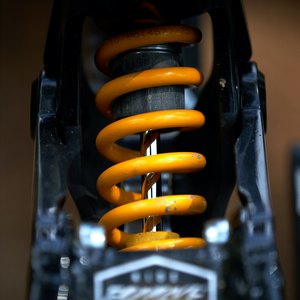The term "biological resistance" refers to the extent to which materials can be degraded by microorganisms such as bacteria, algae or fungi.
Depending on the material the test specimen is made of, different spores are used for the fungal or microbial test; these result from the applied test standard.
In many applications, the materials used must not promote the growth of bacteria and fungi, as this could result in deterioration, reduced durability or even destruction of the test specimen.

- DIN EN 60068-2-10
- MIL-STD-810 G (Method 508.6)
- RTCA/DO-160F Section 13 fungus resistances
- AS 1157.1
- BMW GS 95003-5 Mikrobiological testing (fungus)
- DIN EN ISO 846 Methods A - B - B' - C - D
- BMW GS 95003-5 Mikrobiological testing (fungus)
- ASTM G 21
- AATCC Test Method 30
- AS 1157.2
General information about molds
"Molds" refer to microorganisms that develop fungal filaments and spores and are usually recognized by the naked eye as a coating (black, dark brown or green spots). They are part of our everyday life and play an important role in natural cycles as decomposers of organic material. To date, more than 100,000 mold species are known; conjectures assume more than 250,000 species. Since they are very frugal, they can settle on almost any surface and feed. They can survive for months and years even in drought conditions, but can only grow in humid environments.
Therefore, any end product or component that may be used in a humid environment should be tested for fungal resistance. For quite a few military and aerospace components, such tests are also mandatory.
Fungi can adversely affect the operation and appearance of products used in warm and humid environments. These are the species of fungi commonly known as "molds" (see below) In operation, fungal growth can cause corrosion, mechanical failures, premature wear and unintended electrical conduction paths. Externally-aesthetically, fungal growth makes objects so unsightly that infested equipment cannot be used, even if no effects on operability are detectable. Finally, infections in humans can be caused by fungi.
Many materials serve as nutrients for fungi, including paper, leather, wood, hydrocarbons, polyurethanes, PVC, and others. In addition, surface application of organic material can also turn fungus-insensitive materials into culture media.
Test procedure
For fungal resistance tests, fungal spores are transferred to the item or material to be tested. The commonly encountered spores of Aspergillus, Penicillium funiculosum and Chaetomium globosum are suitable for this purpose. After the spore has been applied, the object is placed in a chamber with hot and humid conditions. There it remains between a few weeks and several months. The growth of the fungus depends on the amount of nutrients present.
Test methodes and standards
Designed for polymeric materials. Since polymers are fungus resistant by nature (do not contain carbon), this test standard is used to determine the fungal resistance of additive materials used in conjunction with polymers. These mainly include lubricants, plasticizers, dyes, cellulose fibers and stabilizers. If these are attacked by fungi, substantial product damage can result, even if the polymer product itself is not susceptible.
Designed for the study of fungal growth in cladding materials used in house construction for insulation. Of considerable importance to builders and suppliers of insulation materials because of the potential health risks.
Developed for the aviation industry in compliance with strict standards. May be part of a larger testing standard, but is also very useful for fungal testing.
Designed to determine the fungal resistance of optical fibers. This is to determine if the conductive media (fibers, cables) maintain their integrity and provide consistent performance even when exposed to 5 different fungi.




